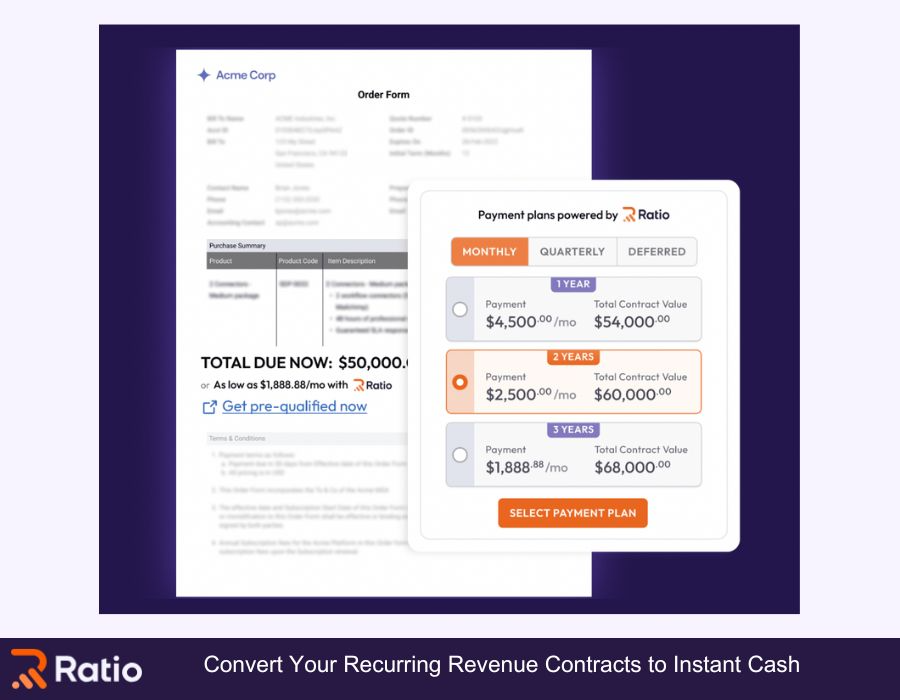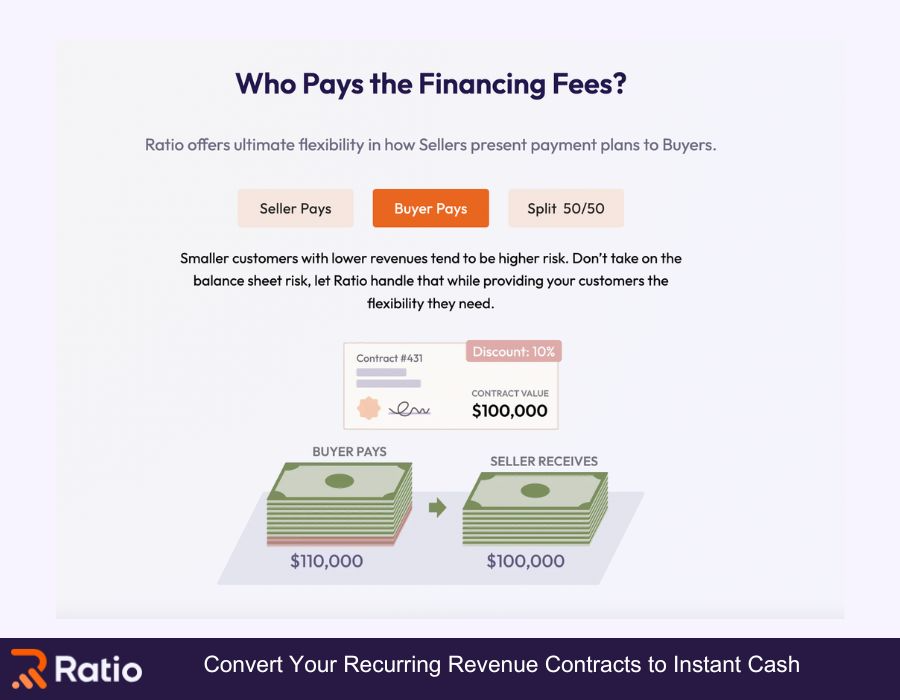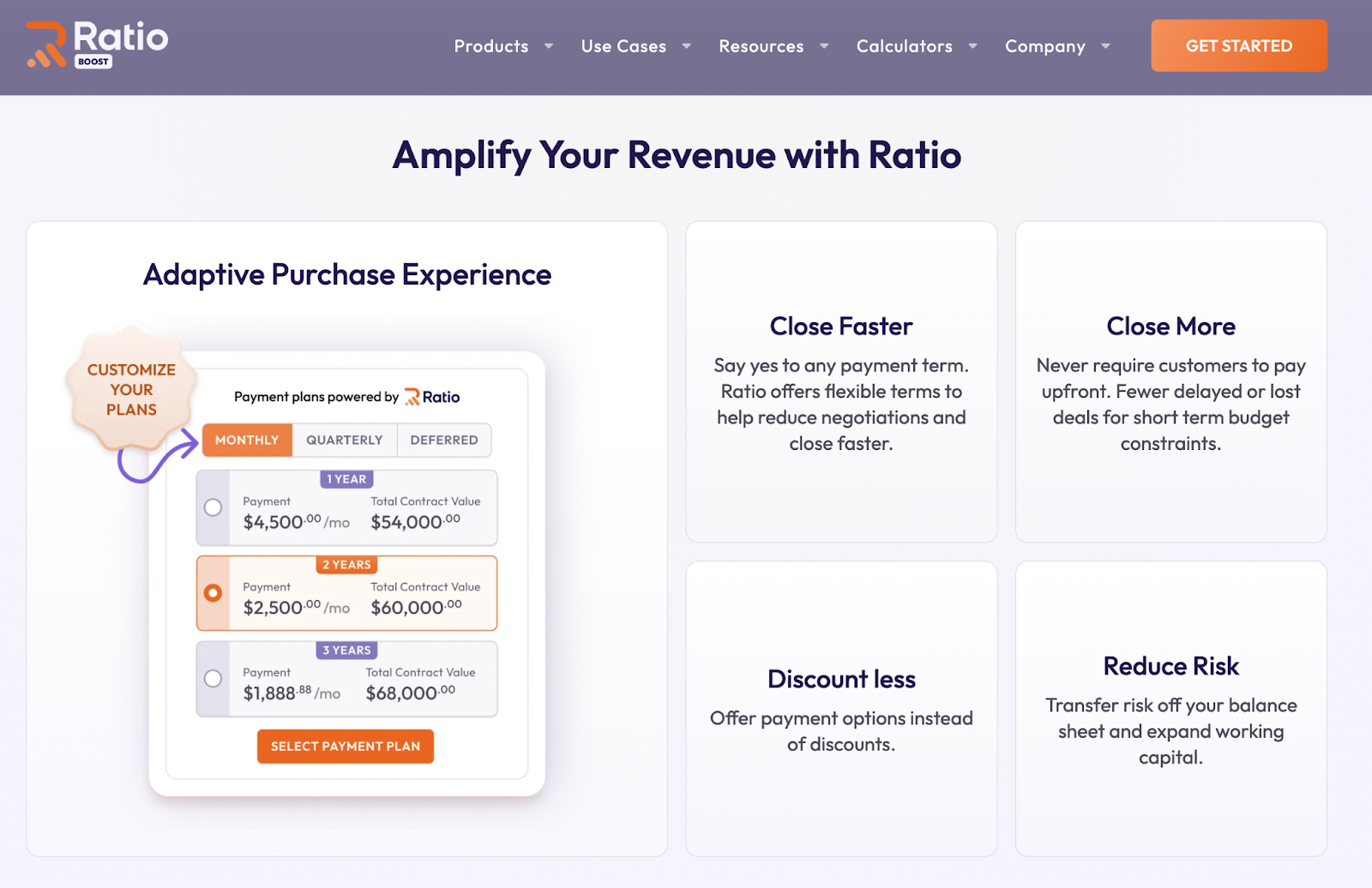5 Compelling Reasons for B2B SaaS Firms to Opt for Revenue-Based Loans
BCC Research reveals a striking growth in the Revenue-Based Financing (RBF) market: from $2.3 billion in 2022 to an anticipated $154 billion by 2030.
This surge is hardly surprising, considering how revenue-based loans are revolutionizing the way businesses finance their expansion. These loans present a ground-breaking approach: repayment terms are linked to a business's recurring revenue.
Revenue-based loans offer a flexible alternative to the rigid repayment schedules of traditional loans, which often fail to consider the business's actual performance.
Unlike conventional options, which often involve equity dilution or relinquishing control, revenue-based loans offer non-dilutive growth capital. This positions it as an ideal pathway to sustained profitability, especially for revenue-generating businesses that don't align with the venture capital model.
For a clear understanding, let's dive deeper and explore why revenue-based loans are increasingly becoming a transformative tool for SaaS businesses.
Five Reasons B2B SaaS Companies Must Explore Revenue Based Loans
B2B SaaS companies find revenue-based loans transformative for various reasons, the most compelling one being the accelerated access to capital, unlike traditional bank loans and their alignment with subscription-based revenue models.
The cherry on the cake for SaaS entrepreneurs is the upfront access to capital with Ratio Boost for SaaS, while offering the ability to spread the payments as per the subscription model for their customers.
The non-dilutive nature of revenue-based loans and the possibility of sharing the cost of financing with SaaS customers make it further attractive for B2B SaaS companies.
1. Accelerated Access to Capital
Traditional financing methods often involve lengthy due diligence, extensive paperwork, and rigid approval procedures. In contrast, Revenue-Based Loans (RBLs) streamline the funding process, allowing B2B SaaS companies to secure capital quickly and efficiently.
This funding utilizes technology-driven assessments, focusing on revenue data and cash flow, enabling swift and efficient access to capital for B2B SaaS companies.
For instance, Ratio, a revenue-based financing partner, offers a swift 48-hour approval process and prompt capital transfer within weeks. Such quick access to funds makes revenue-based loans an effective tool for extending a company's financial runway.
2. Alignment with Revenue
Revenue-Based Loans offer a tailored financing solution intimately connected to a company's recurring revenue, particularly advantageous for SaaS businesses operating on subscription models. In this structure, loan repayments are proportional to earnings, ensuring financial flexibility in line with income variations.
Consequently, when a business experiences growth, such as an increase in subscribers, it can expedite loan repayments. Conversely, in slower periods, repayment amounts can be reduced, providing a safeguard against financial hardships.
Revenue-based financing partners like Ratio Trade underscore this adaptability by allowing B2B SaaS businesses to tailor contracts to their cash flow needs, ensuring repayments stay in sync with customer payments rather than rigid schedules.
Accessing a revenue-based loan through Ratio is a streamlined process.
Simply upload your revenue contracts onto [Ratio's intuitive app](https://app.ratiotech.com/). From there, Ratio works its magic, generating a variety of payment plans tailored to the contract's value. These options are conveniently displayed to your customer right at the point of sale, with native integrations that seamlessly fit into your sales workflow.
This flexibility allows your customers to choose a payment plan that best suits their needs and budget.
For instance, consider a contract valued at $50,000. If a customer opts for a two-year repayment schedule, the monthly installment would be approximately $2,500. Alternatively, choosing a one-year repayment period would set the monthly installment at around $4,500.
This flexible approach ensures that both you and your customers can find the right balance between immediate affordability and overall payment terms.

While your customers relish the flexibility of tailored payment plans, you benefit from immediate access to nearly the full value of the contract.
Essentially, you're providing a Buy Now, Pay Later (BNPL) option for your customers, enhancing their purchasing power and, in turn, driving more deals and boosting your revenue.
For a comprehensive understanding of how this process can transform your business, explore the Ratio Boost product page and see what's possible.
You’d love some other short-term financing options too — explore them all, along with the pros and cons every B2B SaaS should know before taking cash.
3. No Equity Dilutions
Funding often comes at the cost of ownership, a common issue when acquiring traditional financing from venture capitalists or angel investors. This process usually involves giving up a significant portion of the company's equity, typically between 5% and 20% or even more.
In contrast, Revenue-Based Loans offer a notable alternative, especially through revenue based financing providers like Ratio, which enables B2B SaaS business owners to keep full ownership of their company.
Here, repayments are directly tied to the business's revenue, specifically when customers make payments. This aligns the lender’s interests with the business's performance and avoids the burden of fixed repayment schedules.
Unlike equity investors, who may have an indefinite claim on profits or influence over business decisions, Ratio’s involvement ends once the loan is fully repaid. This provides a clear endpoint to the financial obligation.
Also, Ratio does not impose any covenants, restrictions on usage or cumbersome reporting burdens on beneficiaries.
4. Less Focus on Personal Credit or Collateral
Traditional bank loans require B2B SaaS businesses or their owners to have a strong personal credit history and may even require them to provide valuable assets as collateral to secure the loan. That can be especially challenging for newer SaaS companies or those with limited personal credit history.
To rescue, revenue-based loans prioritize a company's actual income as the primary factor for approval. Instead of scrutinizing personal credit or demanding collateral, revenue-based lenders focus on the company's revenue stream.
For example, Ratio Boost for SaaS, a prominent revenue-based lender, does not pull any personal credit scores or require personal guarantees. However, they may access a business credit report associated with the EIN.

They utilize proprietary algorithms and underwriting processes to evaluate creditworthiness and assess the associated risks. This approach not only results in faster approval of capital but also eliminates the need for collateral.
5. Shared Cost of Financing
Revenue-based loans, unlike traditional [interest-based models](https://www.minneapolisfed.org/article/2000/how-do-lenders-set-interest-rates-on-loans), offer transparent, simple pricing without hidden fees or complex terms, reflecting a commitment to clarity and trust; for specifics on pricing and terms, review our Ratio FAQs.

Ratio Boost gives SaaS vendors flexible options for handling financing costs. They can cover all of it themselves, pass the entire cost to the buyer, or share it equally.
For example, with a $10,000 financing cost on a $100,000 contract, the vendor can pay the full amount, let the customer pay it, or they can split it, each paying $5,000. This flexibility improves customer relationships, makes onboarding easier, and boosts their market presence.

Must Read: To successfully implement B2B payment flexibility, be mindful of common pitfalls.
Revenue Based Loans Made Accessible with Ratio
Revenue-based loans are a perfect fit for B2B SaaS companies, offering adaptability, ownership retention, and sustainable growth.
Using Ratio Boost allows B2B SaaS vendors to access the contract value upfront while offering payment flexibility to their customers. Offering payment flexibility enables vendors to expedite deal closures, eliminating the necessity of discounts to attract customers.
This approach effectively moves financial risks off the company’s balance sheet, offering SaaS companies an immediate boost in the cash flow.

Opting for Ratio as your RBL partner can bring several other key benefits, including:
- Access to a substantial capital pool, with more than $400 million available.
- Acquisition of growth capital without the downsides of equity dilution or control loss.
- Flexibility to select specific contracts for sale tailored to your unique needs.
- Comprehensive management of underwriting risk by Ratio.
- Seamless integrations with existing systems, ensuring rapid approval and onboarding processes.
- Expedited decision-making, with approvals or rejections, communicated within 48 hours.
- Commitment to data security, with all client data encrypted and stored separately to guarantee data integrity and confidentiality."
Identify the financing solutions that align seamlessly with your SaaS business needs by registering with the Ratio app today!









.png)


